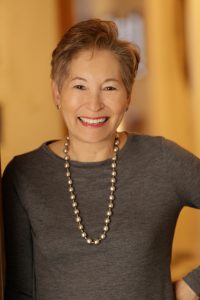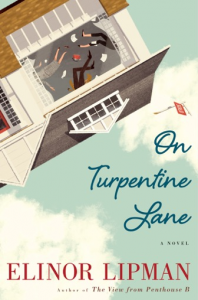By Rebecca LeBoeuf
 Satirist Elinor Lipman, who grew up in Lowell, Mass., is approaching the one-year anniversary of her latest romantic comedy, “On Turpentine Lane.” Reviews written by Oprah.com and the Washington Post praise the novel and compare Lipman’s stories with those of Jane Austen.
Satirist Elinor Lipman, who grew up in Lowell, Mass., is approaching the one-year anniversary of her latest romantic comedy, “On Turpentine Lane.” Reviews written by Oprah.com and the Washington Post praise the novel and compare Lipman’s stories with those of Jane Austen.
“Then She Found Me,” one of Lipman’s early novels, appeared in a New York Times Best Sellers list 18 years after its initial publication, following its adaptation by Helen Hunt.
Have you always written?
I have. I started writing satirical essays in college, things like “How to be a Freshman” and “The Blind Date.” Then real jobs such as working for WGBH TV writing press releases, the Patriot-Ledger newspaper, Massachusetts Labor Relations Commission and The Massachusetts Teachers Association. I started with short stories when I took an adult ed course at Brandeis University in 1979. I switched to novels after having seven connected stories in my first collection. That made me think if I wrote a novella, I should try a novel. I haven’t looked back.
What’s your process in developing your storyline and characters?
Not much. I start my novels with an opening line and take it one sentence at a time. I don’t outline (I wrote on that subject, “No Outline? Is That Any Way to Write a Novel?” which is in my essay collection). As for characters, I keep looping back to see what else is needed; what else the reader has to know about them or their past. But I also believe that one line, a salient detail, can tell a lot. I often quote a line in “The Monk Downstairs,” by Tim Farrington, where a minor character takes a woman and her daughter out for ice cream and asks the guy at the counter for a receipt. What more do you need to know about that guy? Comme ça.
What challenges do you face in your writing, and how do you overcome them?
Facing the blank screen, the question of “what’s next?” and “what do I need to do to make the novel tight, interesting, entertaining” is always the first challenge. I try to remember what my first writing teacher, Arthur Edelstein, said, which was to sit down and “prepare to write badly.” It reminds me that if I put something down, it might lead to a better sentence, a paragraph, a whole scene I like and keep. I have some faith that it will turn out okay, knowing how much revision I do on every chapter before I move forward. I polish and polish until I’m satisfied. And I cut pretty ruthlessly. I’ve learned that I don’t miss what I’ve cut.
What has the road to publication been like for you?
I started submitting short stories, and I believe it was my tenth one that got accepted (Yankee Magazine). I haven’t had a rocky road in terms of books. My first book was a short-story collection that was accepted by Stacy Schiff, then an associate editor at Viking. Since then, offers have come without me suffering heartbreak of the rejection kind.
How do you market your work?
I leave the marketing up to my publisher, except for hawking new books on Facebook and Twitter. I post links to reviews, usually apologetically, such as “self-promotion alert!”
What do you wish you knew when you first started writing?
Hmmm. That’s a hard one. Not something about process, but more about instilling confidence – a sense that it was right to keep at it because there would be many books ahead.
Who are the authors that have inspired you most, and how have they inspired you?
I began writing because of Laurie Colwin’s “Happy All the Time.” The novel had wit and a high IQ, which is what I am always looking for in a novel. Another would be Carol Shields. I was introduced to her with her lesser-known, “The Republic of Love.” Her next book, “The Stone Diaries,” won a Pulitzer. Her work is funny, smart, gorgeous. Sentences to quote and underline. Both authors died too young.
If you could keep just three books in your library, which would you choose and why?
“The Habit of Being: Letters of Flannery O’Connor” because it’s a handbook on how to write fiction and what mistakes to avoid.
“The Razor’s Edge” by Somerset Maugham, for its wonderful first-person narration. I used to read it every few months when I was in college.
“The New Comprehensive American Rhyming Dictionary,” which I rely on every morning when I compose my rhyming political tweet.
Visit Lipman’s website to view her full library.
Category: